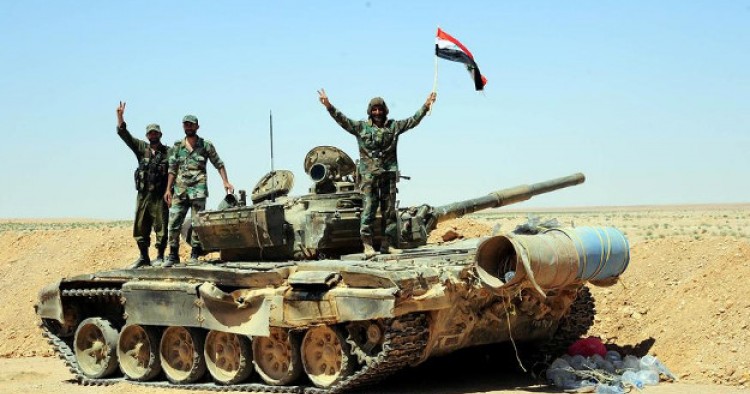According to an agreement between the United States, Jordan, Russia and Syria, armed opposition groups will voluntarily leave eastern Damascus for Jordan, from where they will ultimately be transferred al-Hasakah Governorate in northeastern Syria, Fars News Agency reports. The Iranian outlet adds that two U.S.-backed rebel groups have reached an agreement in southeastern Damascus to surrender their weapons to the Syrian government in exchange for a safe passage to Jordan. Fars also quotes a BBC Arabic report as saying that Egypt has mediated the truce in Ghouta, and the cessation of hostilities in eastern parts of Ghouta came into force on Saturday. The Syrian Army has released a statement warning it would give “appropriate response” to any breach of the agreement. Russian officials and a senior Syrian opposition negotiator Mohammed Alloush, the political leader of Jaysh al-Islam, have reportedly confirmed the deal on de-escalation in Ghouta as well.
According to Fars, a rebel source has also told the Lebanese al-Mayadeen news outlet that Forces of Martyr Ahmad al-Abdo and Jaysh Usud al-Sharqiya (the Lions of the East Army) – two U.S.-backed rebel groups part of the Free Syrian Army – will begin leaving southern and eastern Damascus for Jordan soon. The opposition groups will reportedly hand over their weapons, including ones provided by the United States, to the Syrian Army. These forces will later be deployed to al-Shaddadi region in the northeast and northern parts of Deir Ezzor Province to fight the Islamic State with U.S. military assistance.
According to Fars, which is affiliated with the Islamic Revolution Guards Corps, the second phase of the quadrilateral agreement involves the withdrawal of all foreign forces, including U.S. troops, from the al-Tanf region along the border point between Syria, Iraq and Jordan. The al-Tanf area will reportedly remain a demilitarized zone until the issue of refugees and internally displaced people are resolved. The border crossing will be under the control of the Syrian government, the report adds.
Comment: On August 19, the Russian Defense Ministry announced that the last moderate armed opposition group in East Ghouta, Faylaq al-Rahman, had accepted the terms of the Russian-sponsored de-escalation agreement in the region. But just a day after the ceasefire announcement, Syria jets and artillery targeted rebel-held areas in eastern Damascus, violating the deal. It remains to be seen if the latest de-escalation agreement will hold.
The Fars News Agency’s report that the U.S. military will vacate al-Tanf, where the U.S.-led coalition has been training rebel forces to fight the Islamic State, is not confirmed by the coalition or any independent source. But Iran and its allies have recently stepped up efforts to pressure the U.S. to leave the region. Both Tehran and Damascus see the presence of U.S. troops training rebel forces in al-Tanf as a serious threat. Iran also views the expulsion of the U.S. military from the strategic border crossing between Syria, Iraq and Jordan as a prerequisite to securing a sustainable supply line to Syria and Lebanon, as well as to establishing a new battlefront against Israel in southern Syria. Last week, the I.R.G.C. deployed scores of well-armed Iraqi militia forces of Harakat al-Nujaba near al-Tanf. The new escalation risks another direct, and potentially much more dangerous, ground confrontation between the U.S. and Iranian-backed forces in Syria in the near future.
The Middle East Institute (MEI) is an independent, non-partisan, non-for-profit, educational organization. It does not engage in advocacy and its scholars’ opinions are their own. MEI welcomes financial donations, but retains sole editorial control over its work and its publications reflect only the authors’ views. For a listing of MEI donors, please click here.













